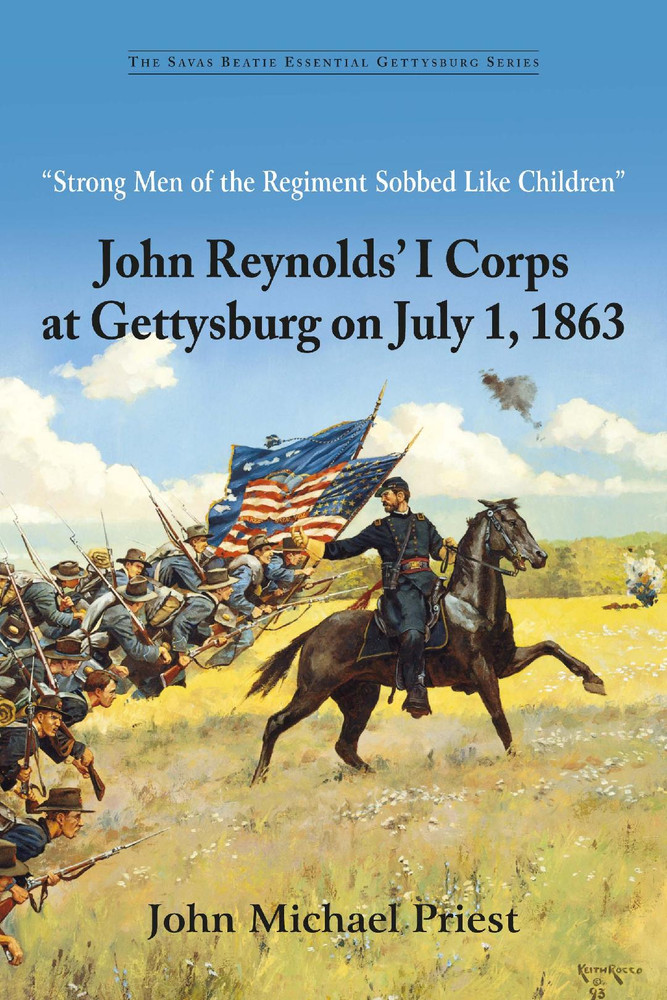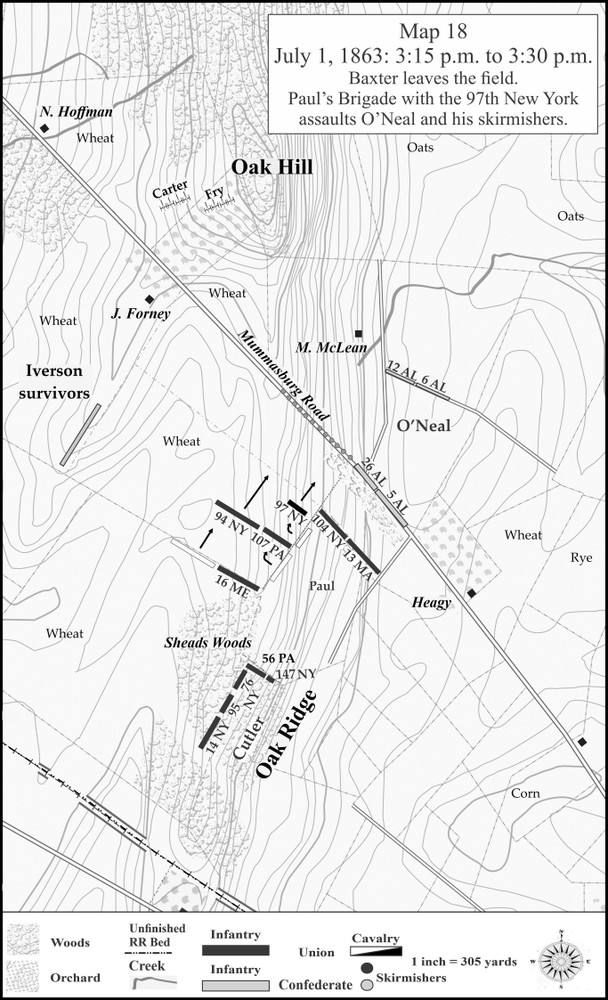"Strong Men of the Regiment Sobbed Like Children": John Reynolds’ I Corps at Gettysburg on July 1, 1863
- Current Stock:
- Gift wrapping:
- Options available
- Author:
- John Michael Priest
- Pub Date:
- June 2024
- ISBN:
- 978-1-61121-689-9
- eISBN:
- 978-1-954547-61-2
- Binding:
- Skivertex cloth with jacket
- Specs:
- Photos, original maps, 442 pp.
This will be printed as a trade title and as part of the Essential Gettysburg series.
eBook coming soon!
Click HERE to read the Front Matter and Chapter 1!
* * *
The fighting on the first day at Gettysburg, July 1, 1863, was heavy, confusing, and decisive. Much of it consisted of short and often separate simultaneous engagements or “firefights,” a term the soldiers themselves often used to describe the close, vicious, and bloody combat. Several books have studied this important inaugural day of Gettysburg, but none have done so from the perspective of the rank and file of both armies. John Michael Priest’s “Strong Men of the Regiment Sobbed Like Children”: John Reynolds’ I Corps at Gettysburg, July 1, 1863, rectifies this oversight.
When dawn broke on July 1, no one on either side could have conceived what was about to take place. Anticipating a fight and with a keen appreciation for terrain, Gen. John Buford deployed his Union cavalry in a giant arc north and west of Gettysburg to slow down any Confederate advance until Gen. John Reynolds could bring up his I Corps infantry. By the time the foot soldiers arrived, A. P. Hill’s heavy Confederate formations had pushed back the troopers from the west, and Dick Ewell’s Corps would soon arrive from the north, threatening the town and its key road network. Reynolds, who would die early in the fighting, poured his troops in as they arrived. The road system and undulating ground broke up command control, and the various ridges, tall ground cover, and powder smoke made target recognition difficult. Brigades and regiments often engaged on their own initiatives without the direction of a division or corps commander. The men of both armies fought with determination born of desperation, valor, and fear. By the time the fighting ended, the I Corps was in shambles and in pell-mell retreat for Cemetery Hill.
Priest, who the legendary Edwin Bearss hailed as “the Ernie Pyle of the Civil War,” spent nine years researching this new study and walking the ground of the first day’s fight to immerse readers into the uncertain world of the rank-and-file experience. He consulted more than 300 primary sources, including letters, diaries, memoirs, newspaper account, recollections, casualty lists, and drill manuals, to present the battle from the ground up. Nineteen detailed regimental maps illustrate the ebb and flow of the battle. The result is a fast-paced narrative with some event not always in agreement with conventional views, something Priest thoroughly explains in the footnotes.
Readers will close the book fully understanding why a veteran New Yorker spoke for the survivors of both armies when he wrote, “Strong men of the regiment sobbed like children.”
Advance Praise
“Priest’s new history is a powerful and important examination of John Reynolds’ I Corps on July 1 and the wide array of Confederate forces that attacked it. It is meticulously researched to a level this reviewer has not seen for any similar Day 1 study and his finest work to date. It also raises a fascinating question: Was the often-overlooked fighting on the first day the major factor in the final Union victory? The soldiers of the I Corps saved the significant high ground south of town by inflicting heavy casualties on some of the finest units in Lee’s Virginia army to buy the time needed to allow reinforcements to gather at Gettysburg. This study, especially the view from within the ranks, is simply first-rate.” - Lance J. Herdegen, The Iron Brigade in Civil War and Memory: The Black Hats from Bull Run to Appomattox and Thereafter
“More than 12,000 men served in the I Corps of the Army of the Potomac at Gettysburg. Despite their broad differences in age, experience, hometowns, religion, and prewar professions, they had in common the undying bond of soldiery born of countless hours together in camp, on the march, and in combat. John Michael Priest deftly interweaves hundreds of primary accounts from members of the I Corps and the Confederate ranks in a ‘you are there’ narrative of the brutal fighting on July 1. This highly readable and hard-to-set-aside treatise is a worthy addition to the growing historiography of the battle.” - Scott L. Mingus Sr., co-author of If We Are Striking for Pennsylvania: The Army of Northern Virginia and the Army of the Potomac March to Gettysburg, 2 vols.
“The Union I Corps almost fought itself to death on the first day at Gettysburg. Many of its regiments suffered more than 60% casualties, but their sacrifice enabled Meade’s Army of the Potomac to hold the high ground and emerge victorious two days later. Priest’s new study recounts the actions of heroic soldiers on both sides at the personal level: how they marched, how they fought, how they suffered, and how they died. He uses a wide array of primary sources, many unpublished, to tell their story, episode by episode, as the battle progressed. Frequent explanatory footnotes further explicate the narrative. A special treat is the numerous original detailed maps tracing their movements. Priest’s new book is a valuable addition to our understanding of the first day at Gettysburg.” - David Martin, author of Gettysburg July 1
A retired high school history teacher, John Michael Priest has been interested in Civil War history since an early age. He is a graduate of Loyola College in Baltimore and Hood College in Frederick, Maryland, and has written extensively about the Civil War. His many books include "Antietam: The Soldiers’ Battle" (1989); "Before Antietam: The Battle for South Mountain" (1992); "Nowhere to Run: The Wilderness, May 4th & 5th, 1864" (1995); "Victory Without Triumph: The Wilderness, May 6th & 7th, 1864" (1996); and "Into the Fight: Pickett’s Charge at Gettysburg" (1998). Praised by legendary historian Edwin C. Bearss as the “Ernie Pyle” of the Civil War soldier, Priest appeared on the Discovery Channel’s Unsolved History: Pickett’s Charge (2002) and is one of the historical consultants for the miniseries "To Appomattox." He and his wife live in Clear Spring, Maryland.











